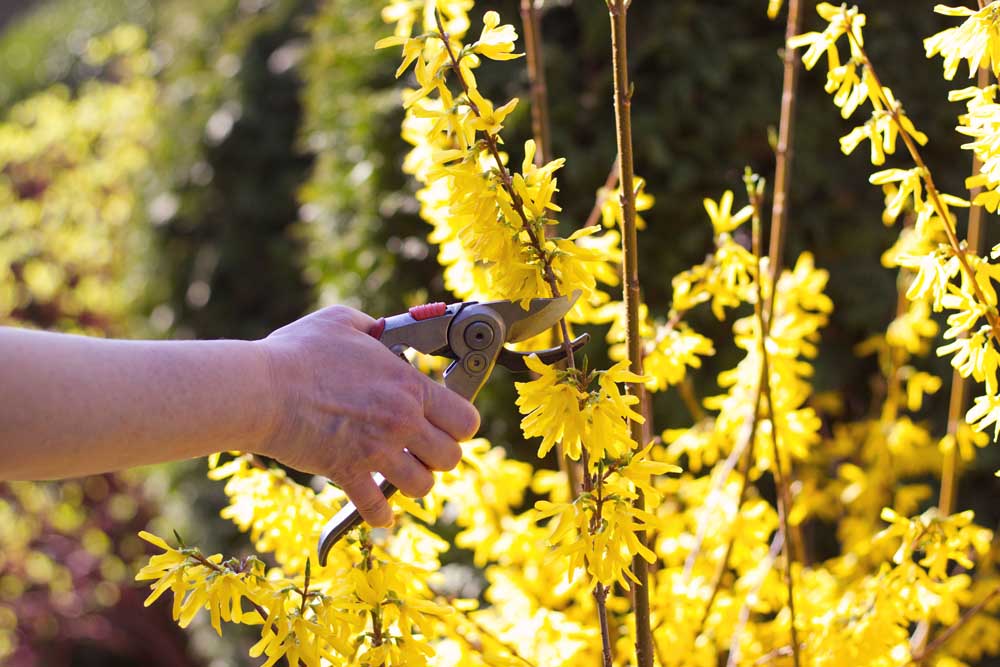Gardening column: Native plants are best plants for Central Oregon
Published 12:45 am Wednesday, April 14, 2021

- Forsythia shrubs grow well in Central Oregon.
Every year for the past 20 plus years, I start watching my forsythia bush for fattening buds. Then I look over to the emerging daffodils. Why? I need to have the visual that phenology is still in place and the world hasn’t gone “to heck in a handbasket” over the winter.
Phenology is the study of the cyclic relationship between climate, plant and animal life. In the case of the forsythia/daffodil relationship it has been the same time clock over the years. First, the forsythia blooms followed by the daffodils blooming within two weeks.
In the mid-west, the old-time farmers watched for “when the oak leaves are the size of a squirrel’s ear,” as the indicator to sow their corn. Another was “when apple trees shed their petals it is time to sow corn.” With soil science information becoming more available to the home gardener, we have learned that proper soil temperature is what drives seed germination. Some seeds do germinate at soil temperatures of 45 to 50 degrees. However, the crops most gardeners want in their summer vegetable garden: tomatoes, corn, cukes, beans, require the optimum soil temperature of 75 degrees for in-ground seed planting. The moral of the story: If you want success, buy a soil thermometer.
Now that I am assured spring gardening in Central Oregon is on its normal path, I will continue on with my yearly shopping list of perennials. That’s the list that usually starts in the middle of winter when you are suffering from insomnia and you get out of bed and look at a nursery catalog. By the time April arrives, the wants and desires list is extensive and needs to drastically be cut back. That’s hard to do when you want it all.
The sensible and economical process is to think about and make a list of what your criteria are for your landscaping plants. I have the “friendly five” deer that visit almost daily. Needless to say, I look for deer resistance knowing full well they will probably nibble, especially the young ones, but won’t have a feast. Also high on my list is a low-water requirement. These two criteria limit the choices somewhat but it does make the best use of my landscaping budget.
The selections increase when I refer and sort through the native plants for Central Oregon that are available and will meet my desire for color and texture.
Desert sweet, chamaebatiariar millefolium, a deciduous shrub listed on the Native Plant for Central Oregon list is one that I am planning on adding this year.
Desert sweet is also known as fernbush for its fern-like leaf appearance. The small shrub produces white flowers that are sweetly aromatic. In addition to the aromatic flowers, the leaves have a sticky quality which is also a deer deterrent feature.
The preferred growing condition for the irregular, un-kept-looking shrub is in full sun. Desert Sweet is listed in the OSU publication “Water-wise Gardening in Central Oregon,” EM 9136.
I will also be looking for agastache berberi or hummingbird mint, which is considered to be a magnet for butterflies and hummingbirds. This group has many common names. Hummingbird mint and anise hyssop are two of the more hardy varieties. I have ‘golden jubilee’ anise hyssop, which has overwintered in a planter for at least five years.
Salvias are on my list for their pollinator quality and attraction for bees. The varieties are cold hardy, deer resistant, and listed on the water-wise plant list. With the exception of “east friesland,” most varieties will not reseed. The plant benefits by deadheading to encourage a second bloom.
The air temperatures may be going the full range of unpredictable spring weather but plant growth is happening. Every day I discover something new has popped out of the soil. The alliums are showing strong growth which reminds me to add more bulbs to the fall shopping list. The lists never end.
Resources: Selecting native plants for home landscapes in Central Oregon, https://catalog.extension.oregonstate.edu/ec 1623





